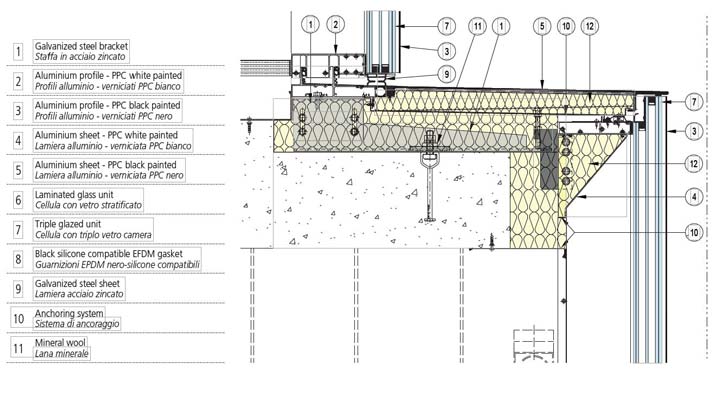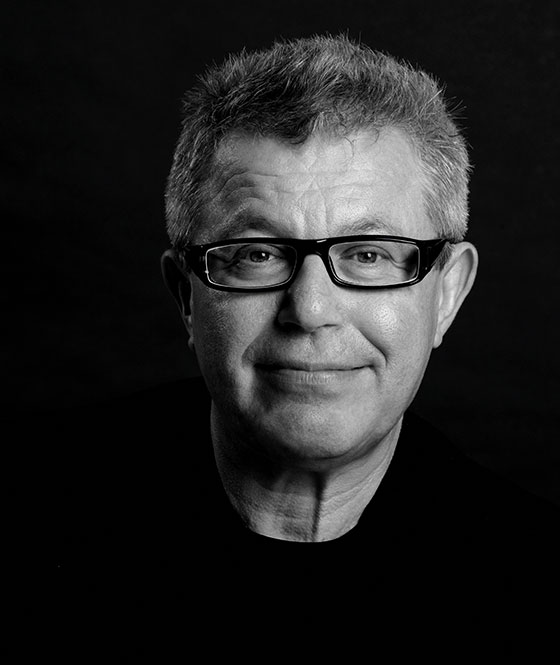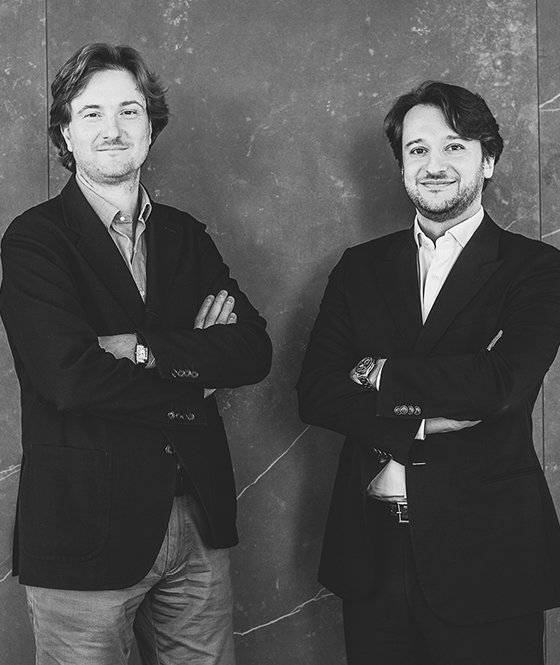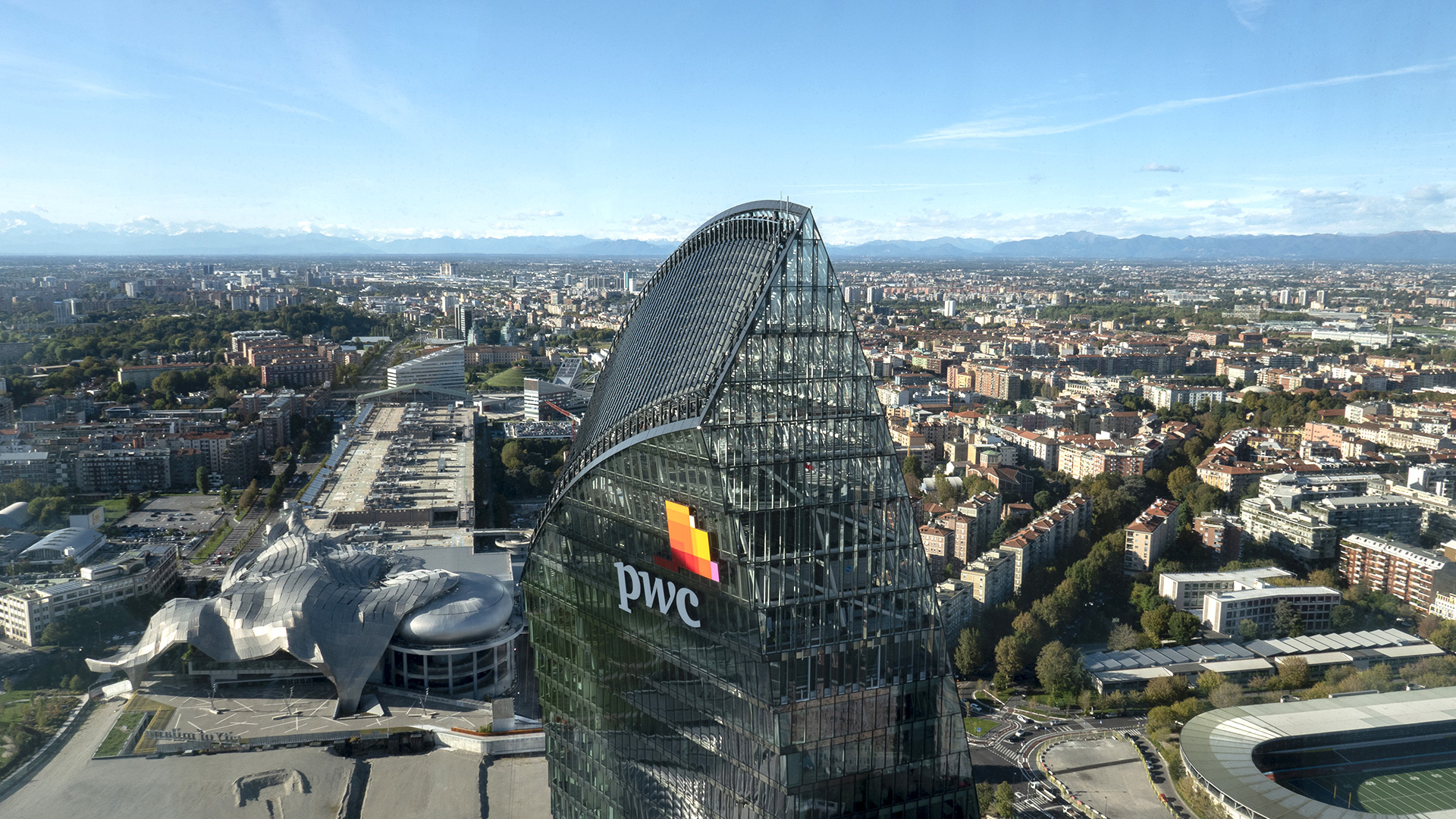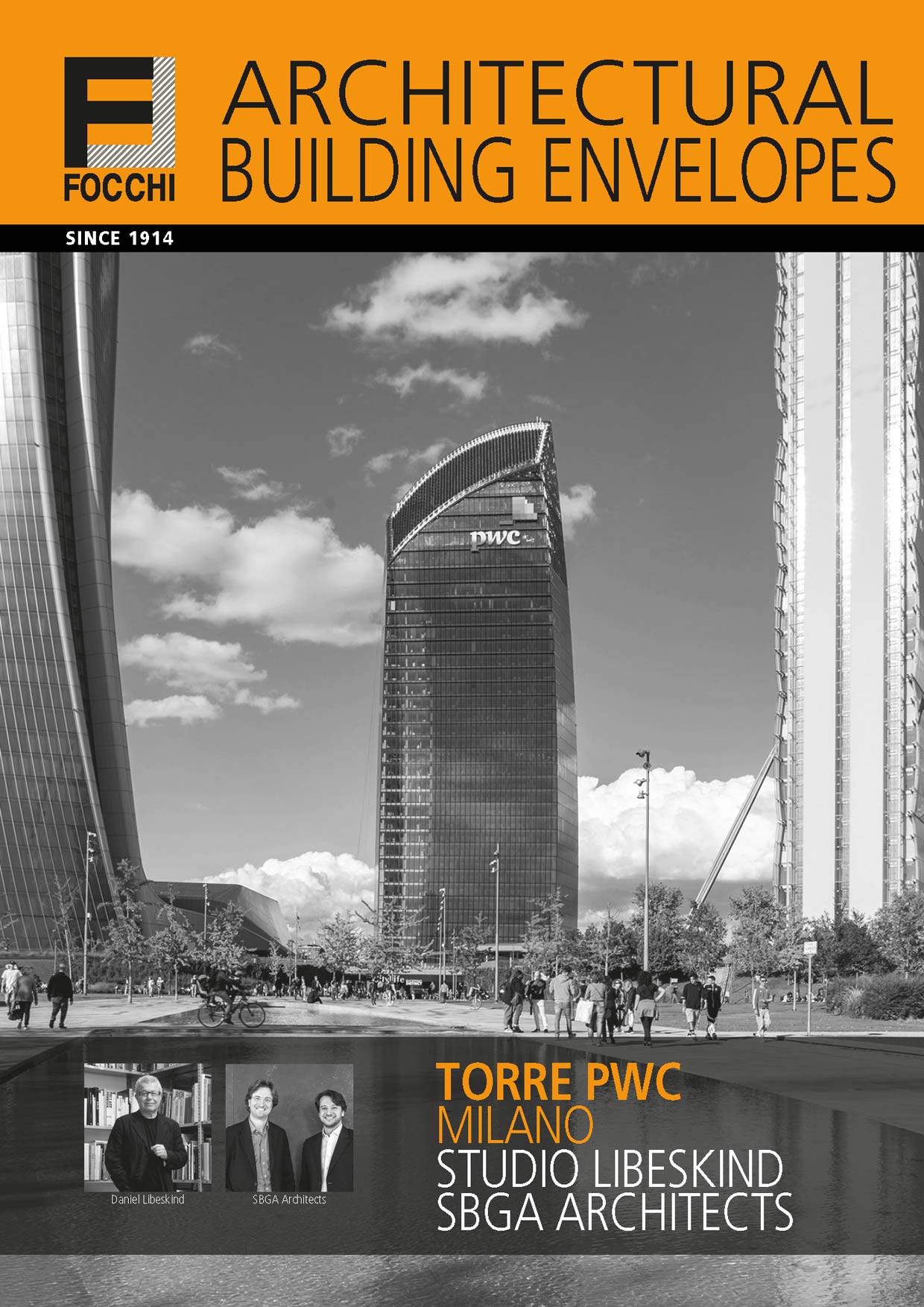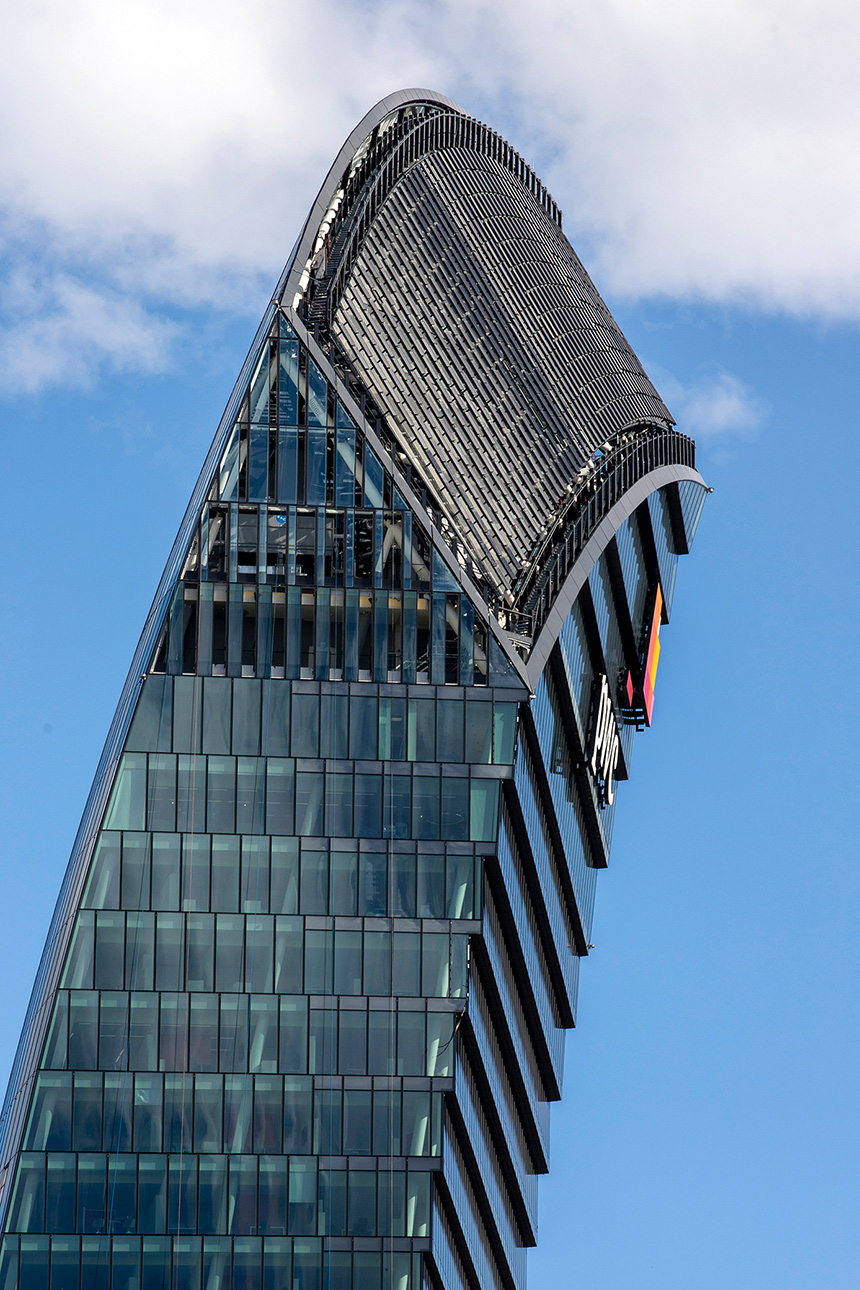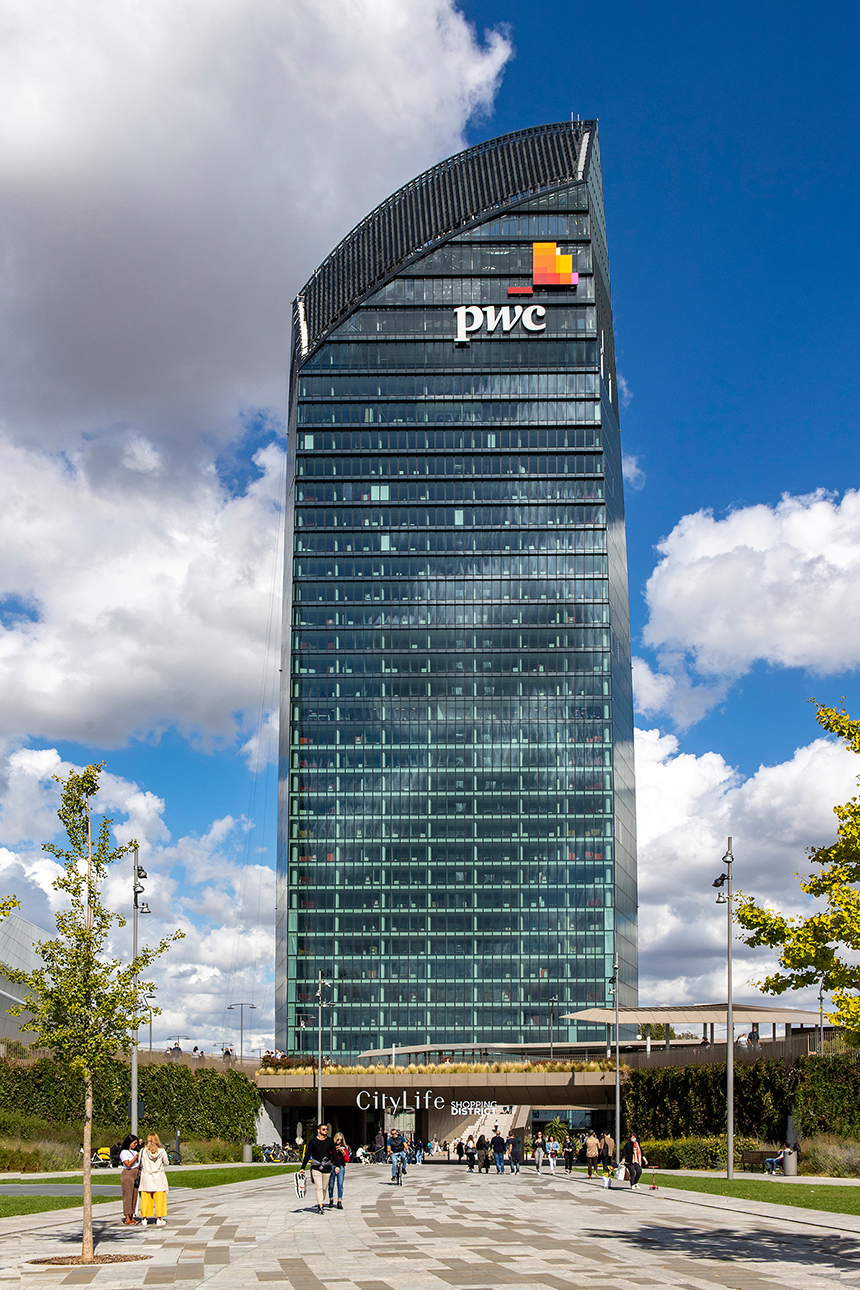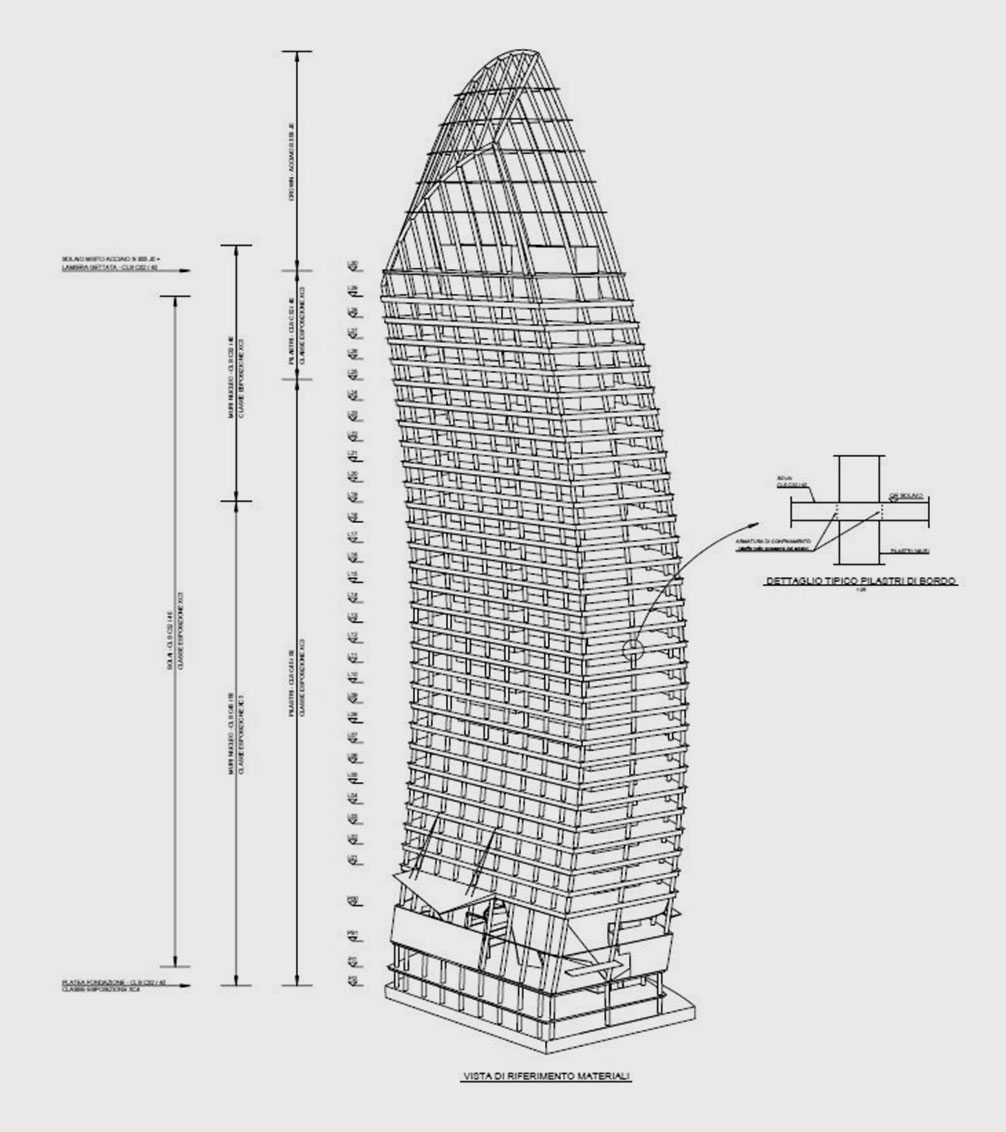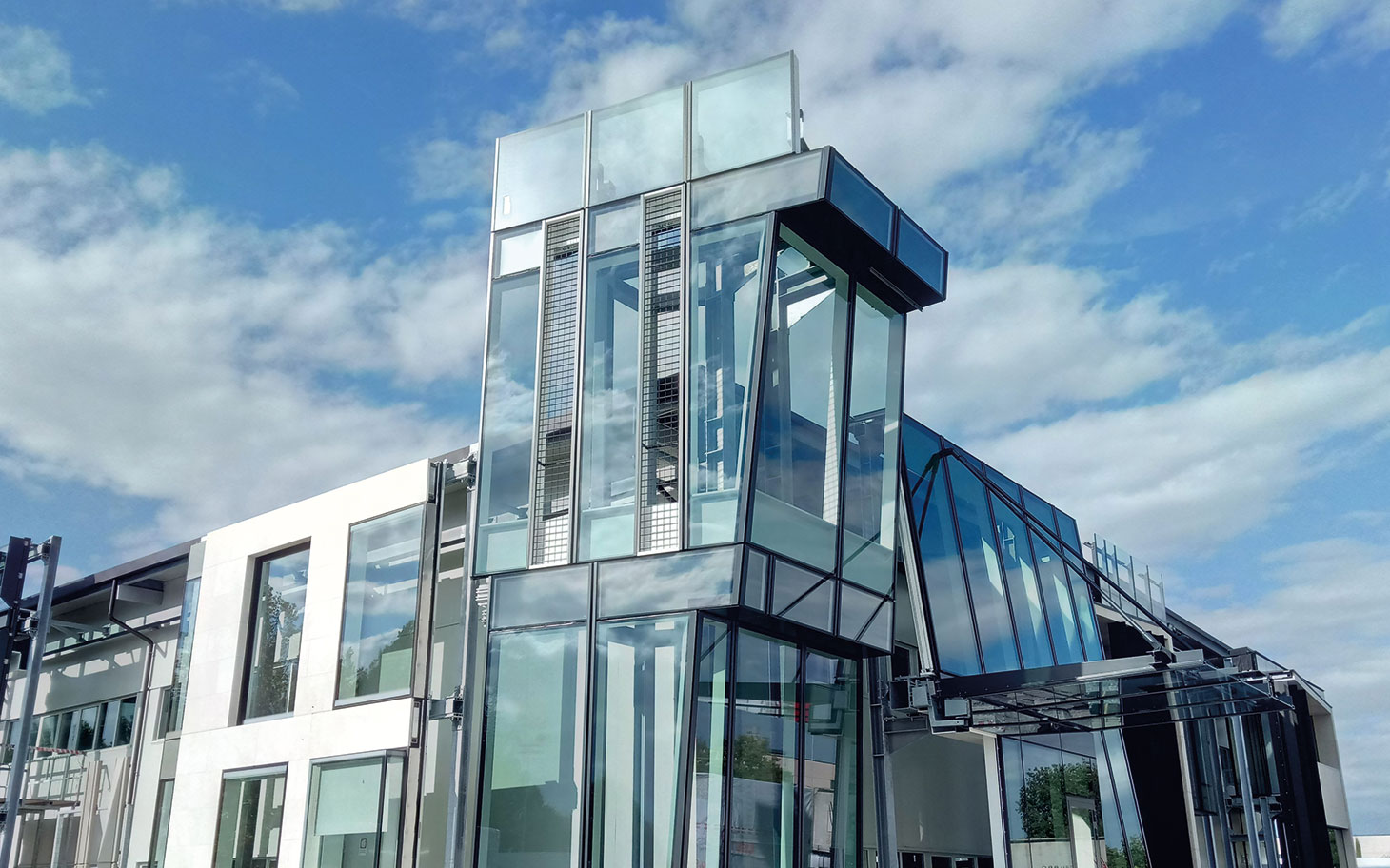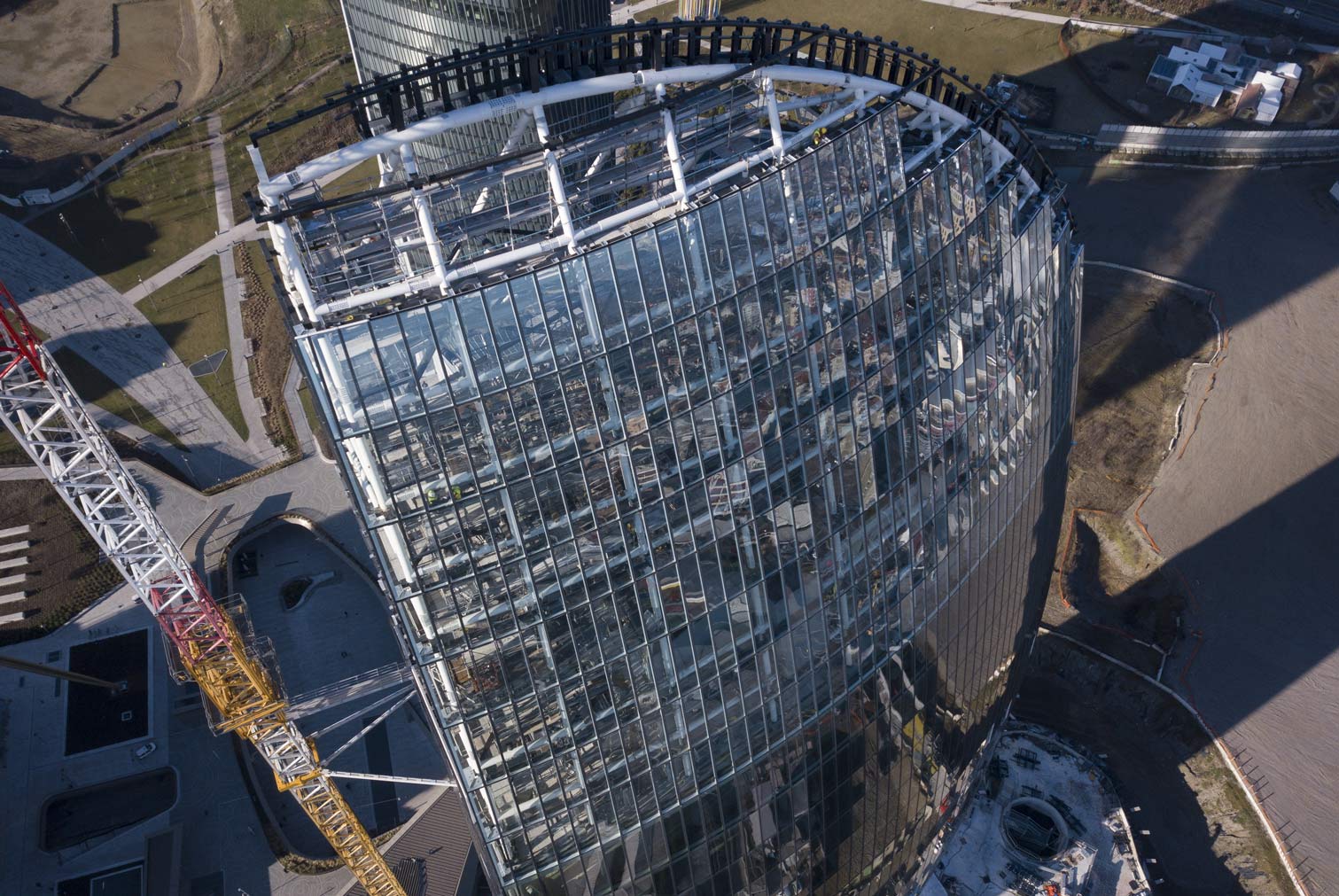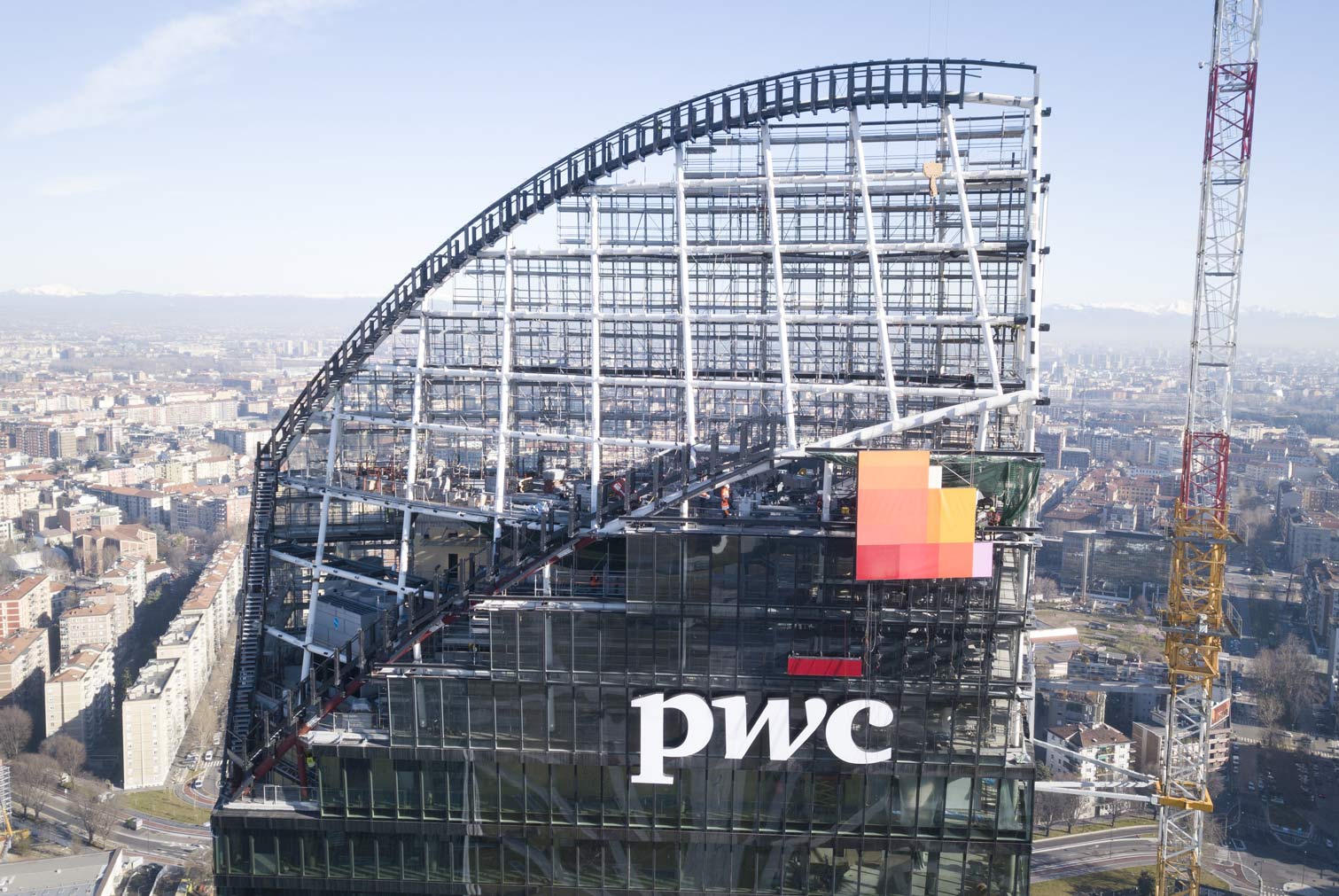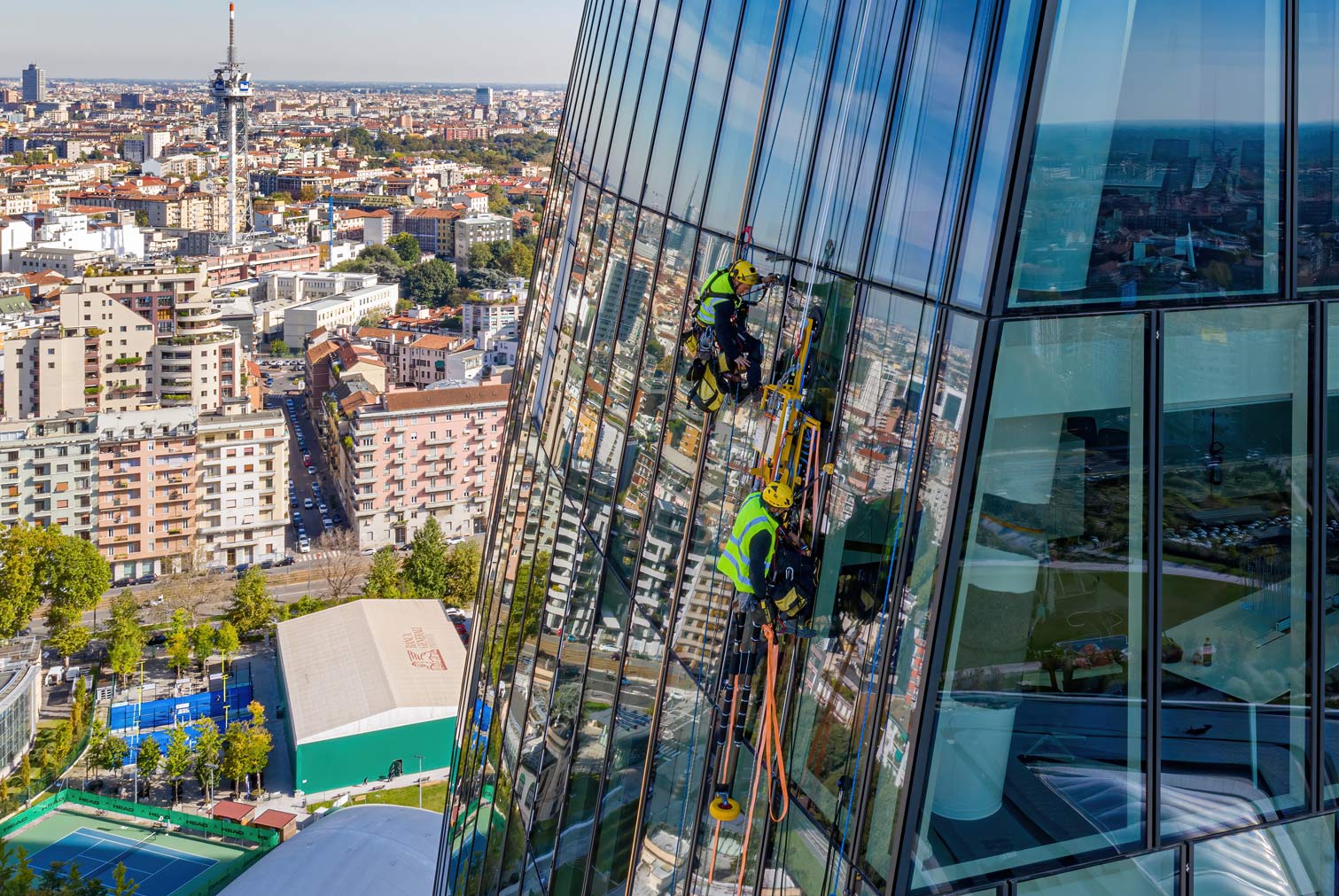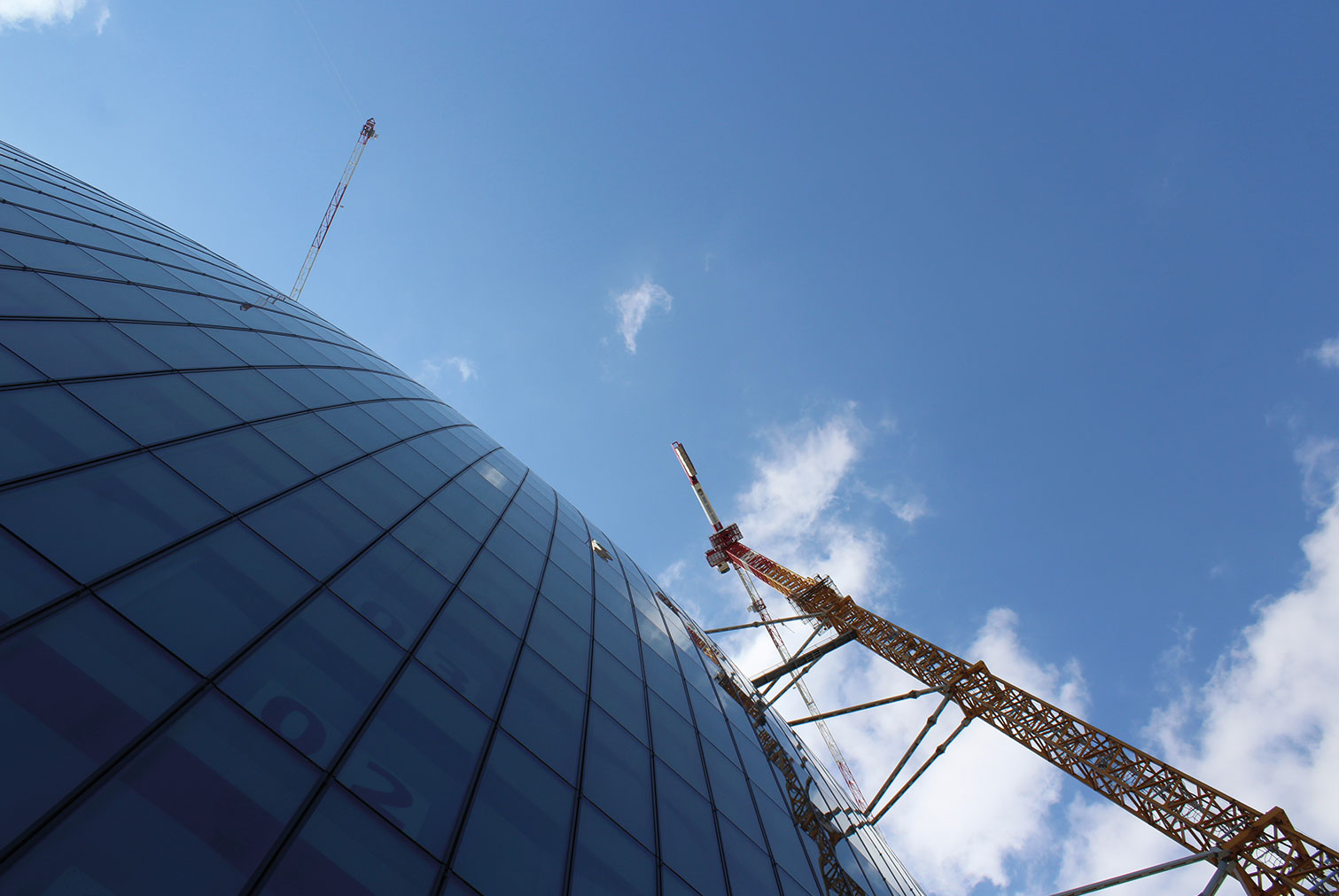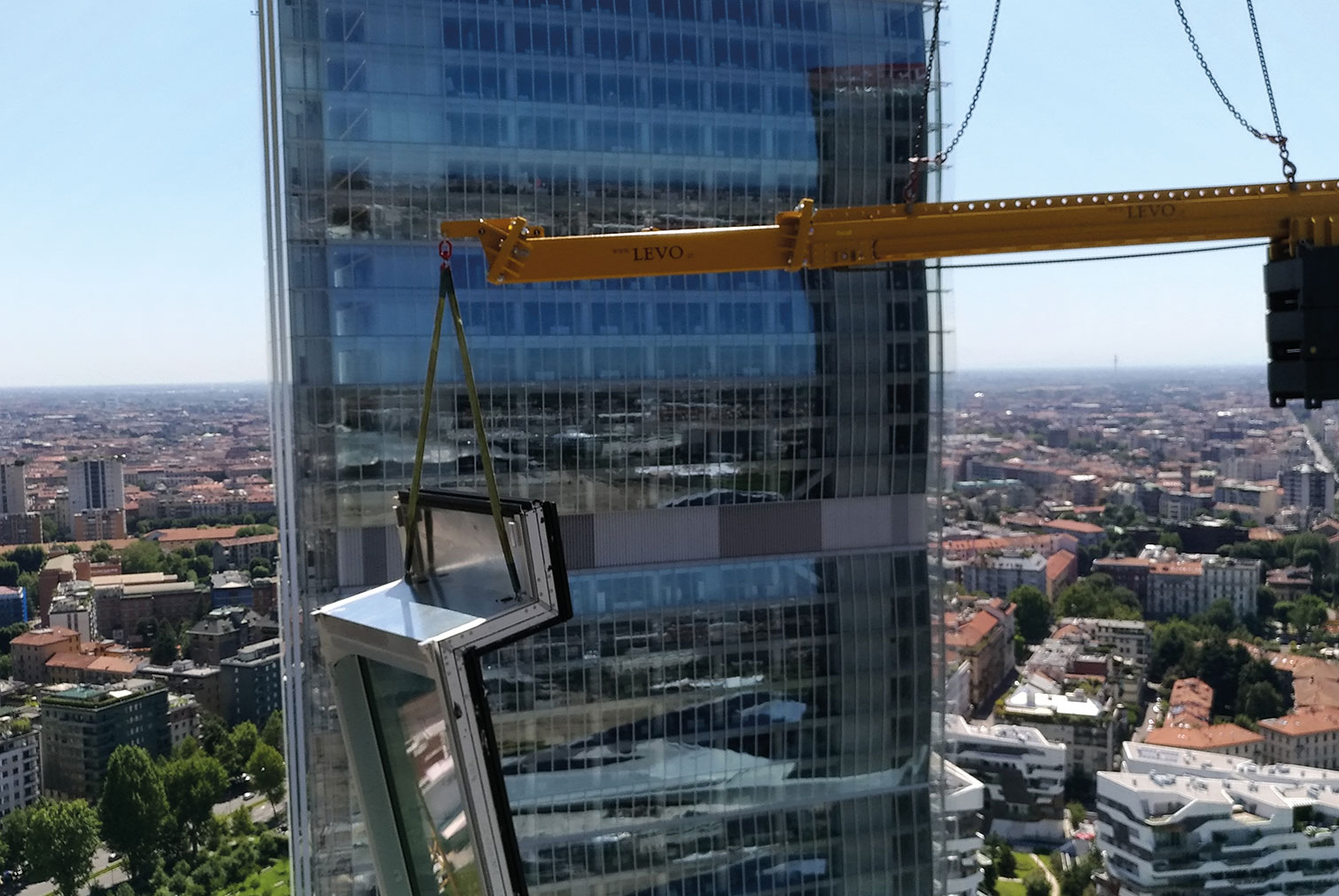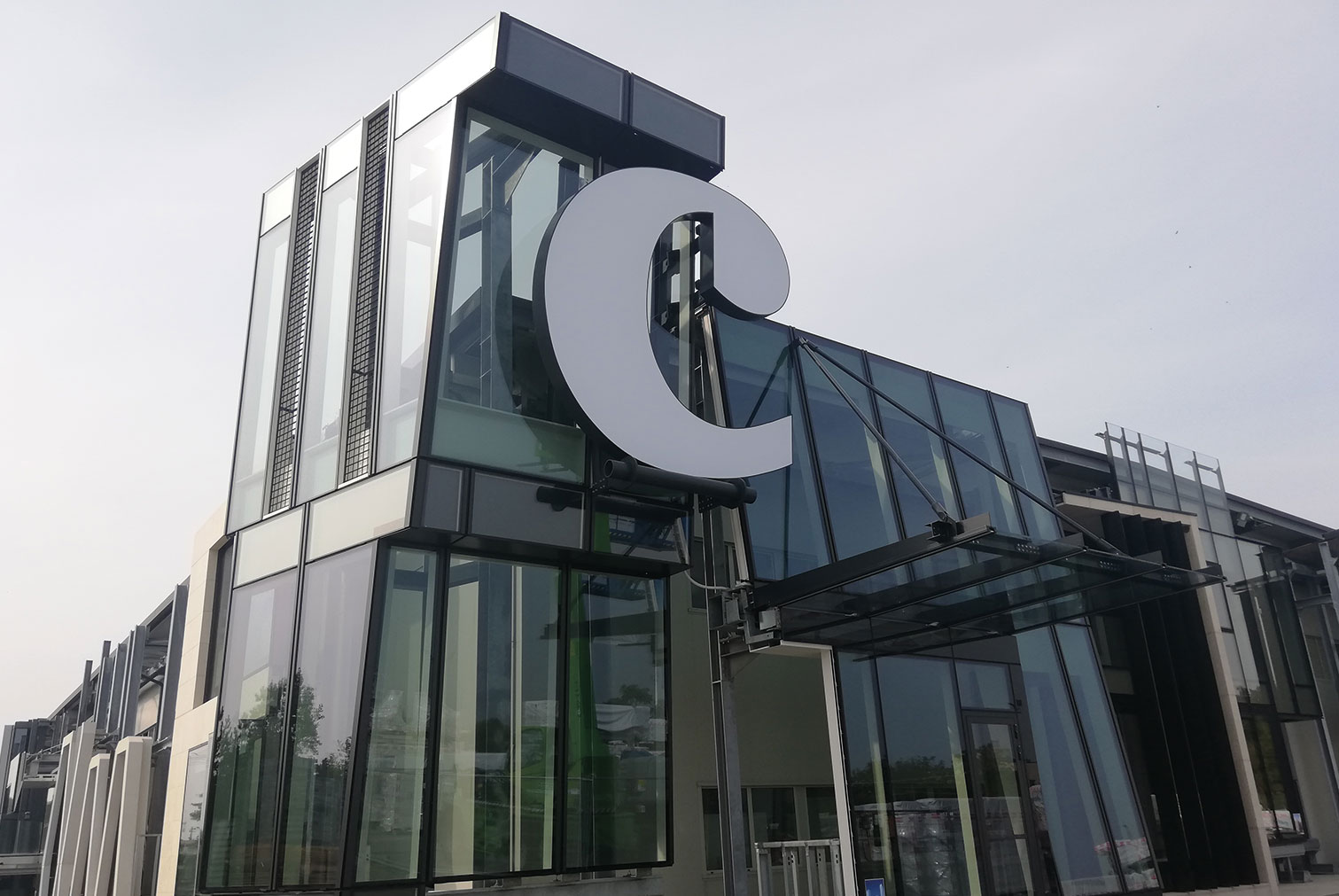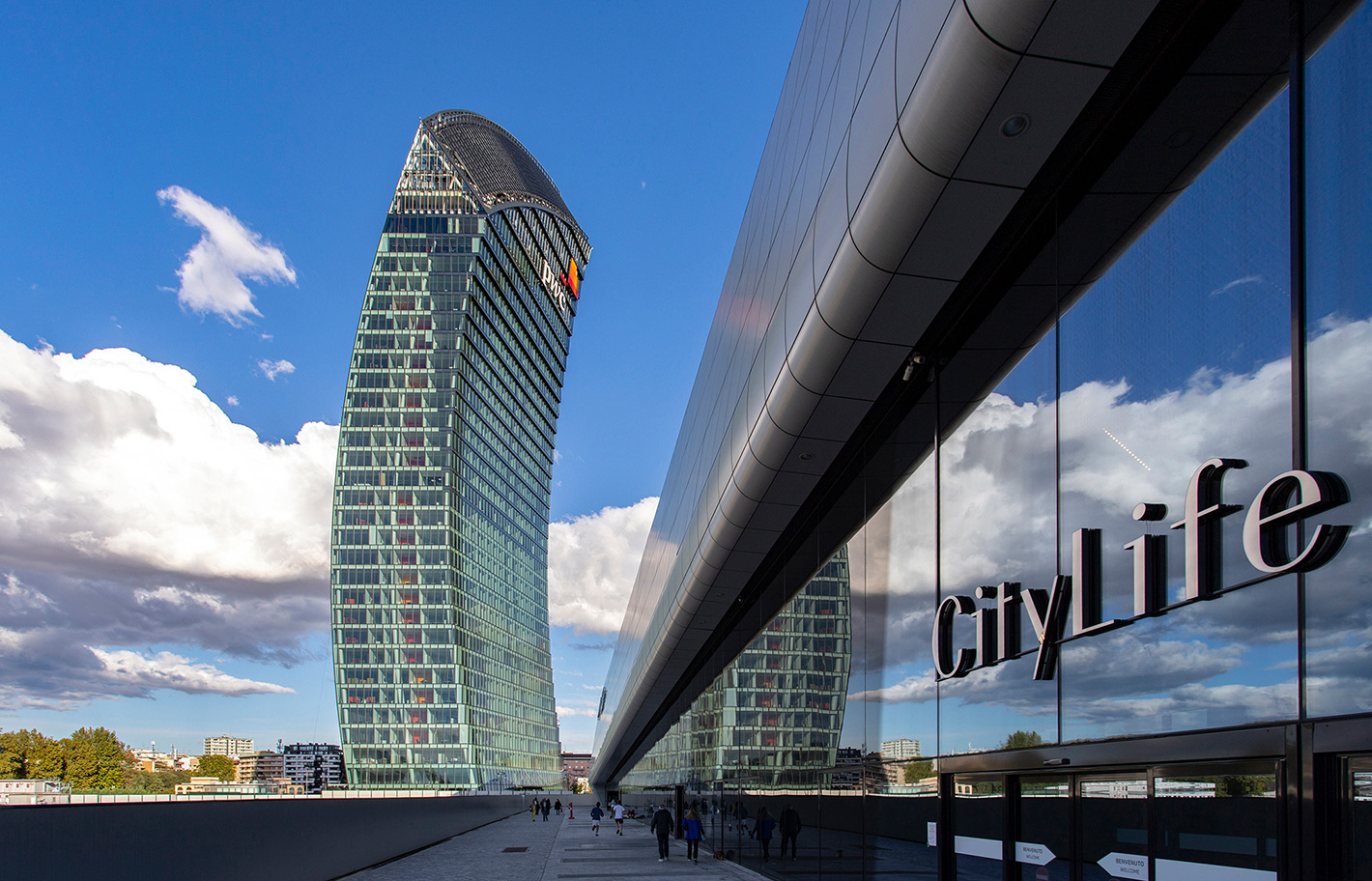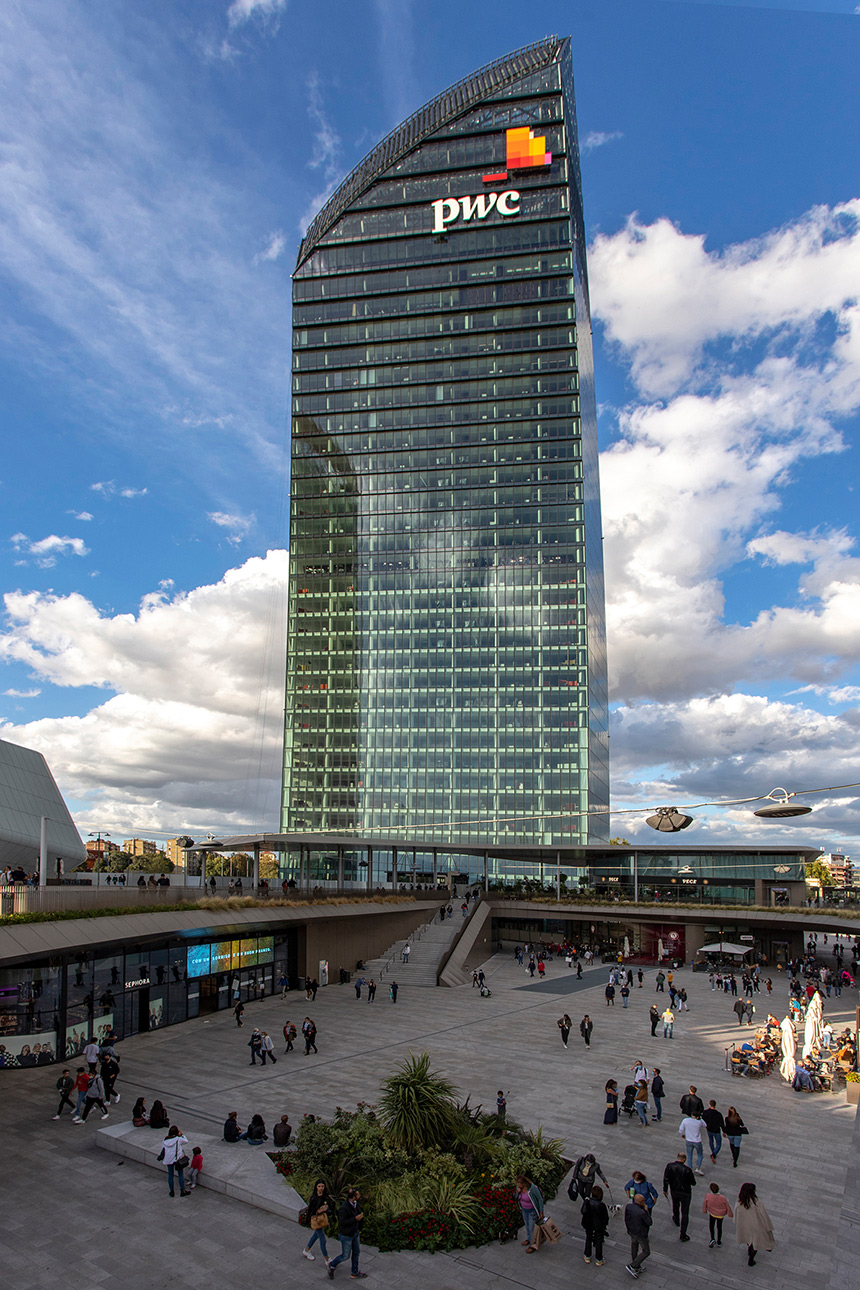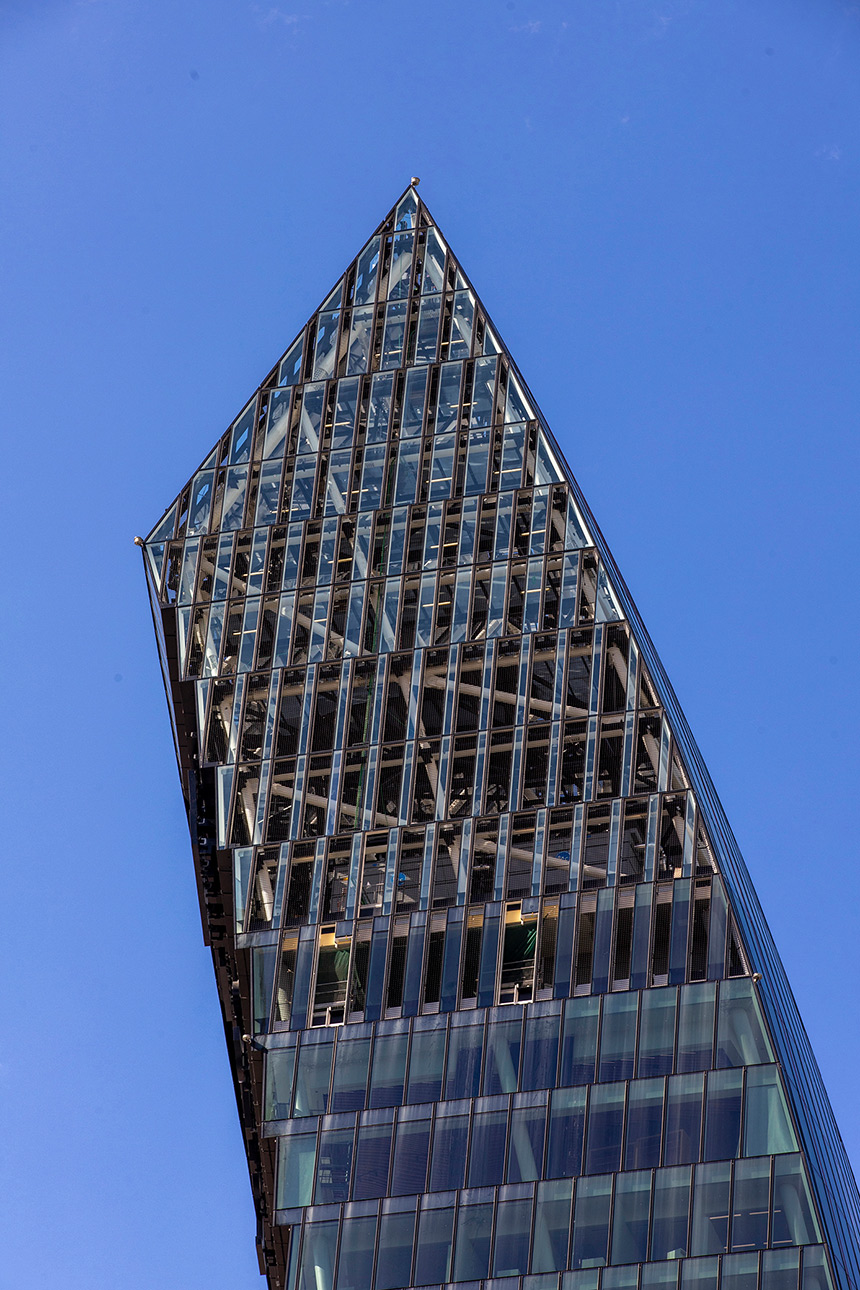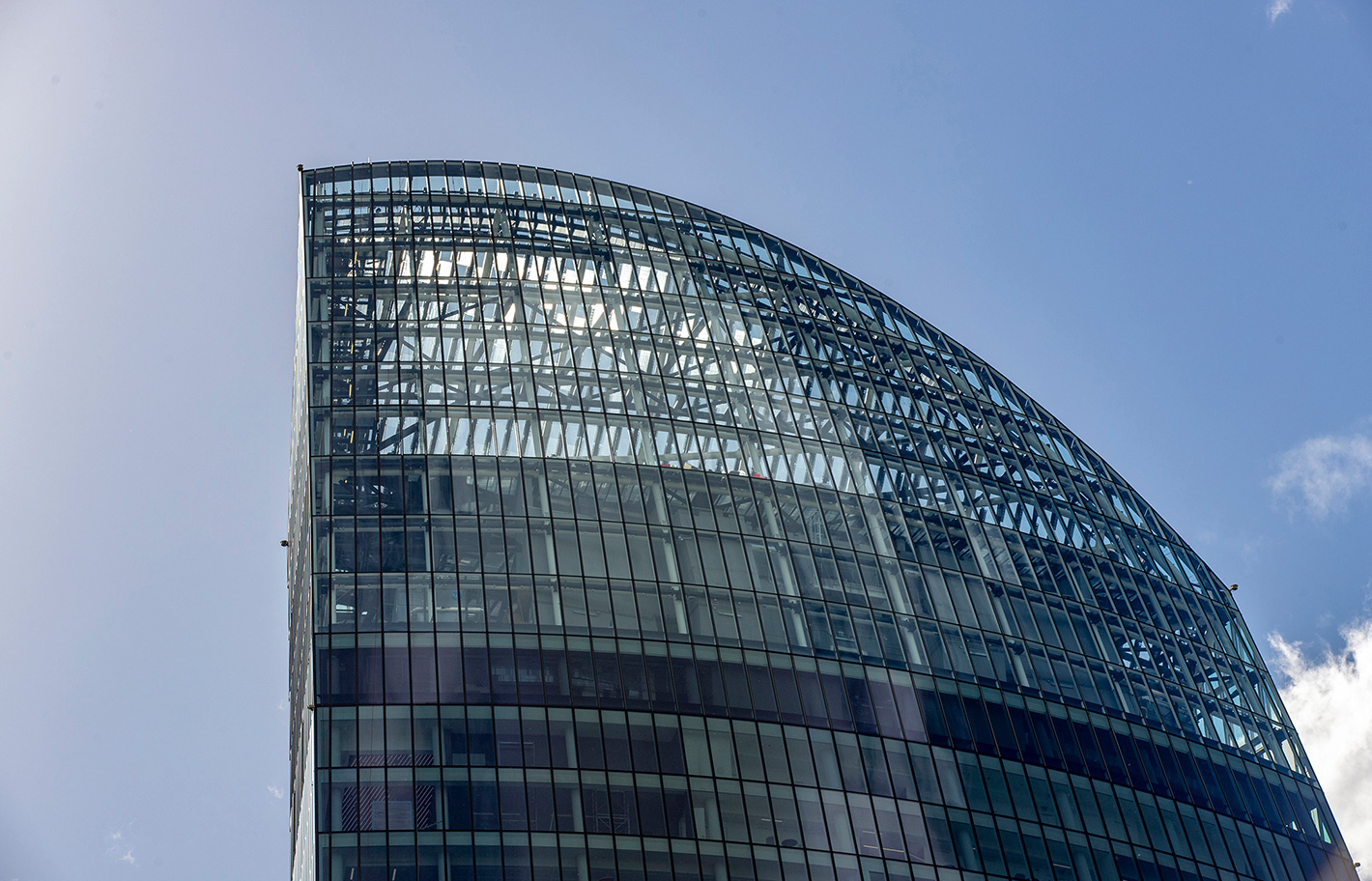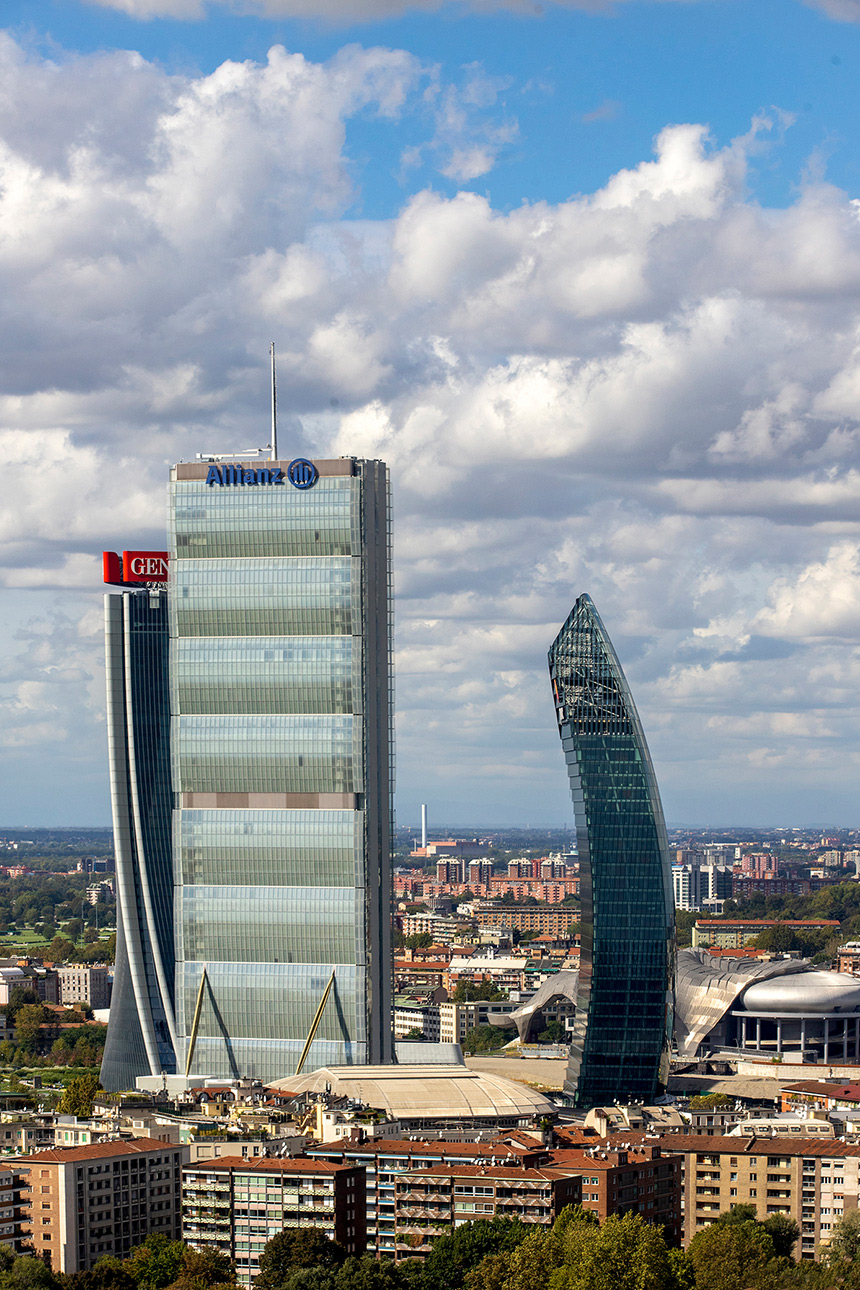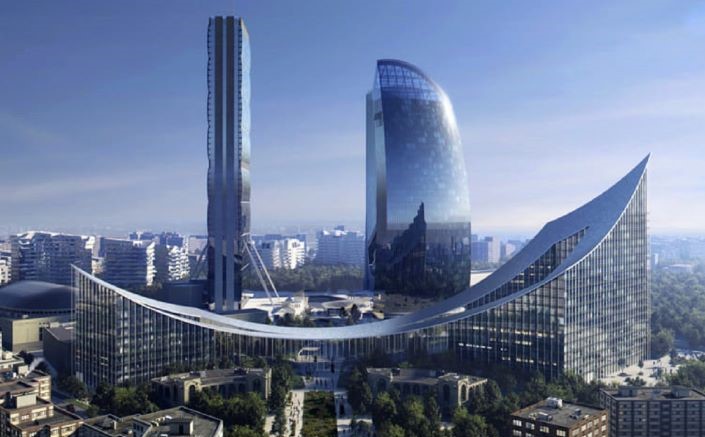The facades feature flat glazing that follow the geometry of the building. The curvatures are achieved by varying the angle of inclination at the vertical and horizontal joints between the units. The toroidal geometry of the North elevation is defined by flat trapezoidal units that follow with, a broken line, both the arch in plan and the arch in section. In plan, the adjacent units form a slight angle between them, which is absorbed in the joint between the mullions.
On vertical section, the curvatures are created by varying the angle of inclination between mullions and transoms whose faces always remain parallel to the horizontal plane. For this reason, that angle varies from floor to floor, in accordance with the architectural drawings. The aluminum profiles composing the frame elements have been designed and produced according to project specific structural and functional requirements. In order to define the appropriate structural and thermal performance, the bespoke facade has been certified through a formal test procedure.
The typical size of the panels is about 1500mm x 4100mm, although it is not possible to identify a constant module in all the elevation due to the complex geometry of the tower. The total surface area of the envelope is approximately 27,075 m2.
South elevation has been developed following a study on the behaviour of light and energy reflections, generated by the convex shape of a cylindrical surface. To avoid a critical concentration of energy on the square, the cylindrical surface was split up with vertical glazed panels, giving the façade its characteristic stepped shape. The horizontal steps consist of PPC painted aluminum flashings, insulated with high-density shielding mats to ensure thermal performance, and to avoid the rain drumming effect.
The module of the shelf horizontal panel coincides with that of the units and an electric coil is integrated inside as an anti-freeze system to avoid ice formation in the event of snowfall or temperature drops. The stepped course required the use of a spandrel panel on some floors. This shadow box consists of glass and PPC painted aluminum. Full-height glazing feature on floors 1 to 13, whilst shadow box panels are provided in front to the slab for the upper floors. The shadow box constitutes an integral part of the unit which will thus have a "knee" appearance.
